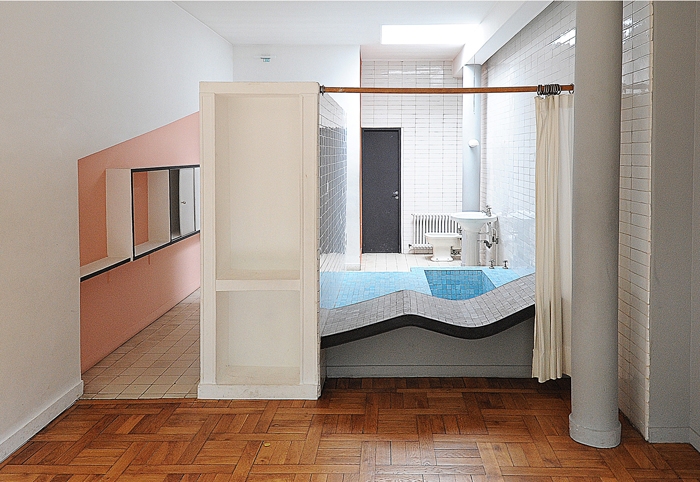As you stare out of the floor-to-ceiling window, the city lies before you. The soft lights of your hotel room are reflected in the glazing – looking like the traces of ufos in the darkening sky. All the while, your own reflection floats like a ghost amid the cityscape.
With its huge plate window, the room is both an auditorium from which to view the city and a stage upon which your own intimacy is performed before the city as a witness.
Behind you is your room – a bed, a bath, a glass screen still dripping from the shower you just took. All handled with that monastic-luxury palette of blond wood, grey carpet and slate tile.
It’s not any traditional room-type: not quite bathroom, bedroom or office. These usually distinct zones have been smeared together to create a space defined not by walls but by punctuations of sanitaryware, Egyptian cotton and recessed technology.
This kind of luxury prioritises individuality, authenticity and personality but it is not simple surface flattery. Those things are present in its spatial conception too. It places a focus on you, your own body as a thing treated and serviced, nurtured by experience. And nowhere more than in the ever more complex arrangements of what one might – just – call a bathroom.
Here the idea of the body, of privacy, of traditions of hygiene and self-image, is staged. Glass walls that dissolve traditional boundaries, bathtubs that have migrated into living areas, basins that have become complex water features – all dotted with vials of gels and crèmes, scented and branded with messages.
Shallow as they may seem, the lineage of these kinds of space is deep, leading all the way to the filthy, sewerless streets of the industrial city.
It was out of the need for sanitation that a new idea of architecture and the city emerged during the late-nineteenth and early-twentieth century. This was an idea of cities and buildings that could be planned, of places filled with light and air, of hygiene. Advances in engineering and infrastructure, the desire for social reform and the development of medical science began to transform the relationship of the city to the body. For architecture, these tendencies catalysed as the thing that became known as Modernism. And the bathroom was the real battleground for these new ideologies, sensibilities and technologies.
Washing, hygiene, the cult of health and outdoorsiness, the heliotherapy that the medical profession advised to cure rickets and tuberculosis, merged with the aesthetic and cultural project of modernist art.
Think of the bathroom of Le Corbusier’s Villa Savoye – with its tiled chaise-longue next to the sunken bath, daylight and openness to the rest of the house. It suggests a very new way for the body to occupy space – exploding the usual domestic privacy with an image of bright exposed nakedness.
Hygiene here is far more than practical, it’s also moral, channelling a secular version of John Wesley’s ‘Cleanliness is indeed next to Godliness’
Hygiene here is far more than practical, it’s also moral, channelling a secular version of John Wesley’s ‘Cleanliness is indeed next to Godliness’ and revelling in a declaration often attributed to John Ruskin: ‘A good sewer was a far nobler and a far holier thing… than the most admired Madonna ever printed’.
For all its ideological moralism, it was plumbing that fascinated the modernists. By the end of the nineteenth century, Adolf Loos, in an essay titled ‘Plumbers’ (1898), waxed lyrical about English waste management:
‘The plumber is the pioneer of cleanliness. He’s the State’s top tradesman, the quartermaster of civilization, the civilization that counts today.’
And in the foundation text of architectural Modernism, Le Corbusier wrote, ‘We no longer have the money to erect historical souvenirs. At the same time, everyone needs to wash! Our engineers provide for these things and so they will be our builders.’
Sigfried Giedion argued that the American bathroom was the only room in the house whose history was not tied to feudal times. ‘This room is modern,’ he said. ‘It is American.’
At the same time, though, we should also remember that other modernist ideas were folded into the mix, of psychoanalysis, for example, where Freud told us, ‘The impulse towards cleanliness originates in the striving to get rid of excretions which have become unpleasant to the sense-perceptions.’
These narratives continue to be staged with the bathroom as its theatre. And in no more extreme form than with the luxury hotel bathroom, a type of space bequeathed to us by psycho-aesthetic-medico-engineering, where the pleasures and perversities of the idea of cleanliness can be acted out.
This article was first published in the May 2015 issue.
